How Long Does Garlic Take to Grow? (Speed It Up)
While garlic generally takes several months to grow, there are strategies you can employ to expedite its growth. This article will delve into the journey of growing garlic, from planting to harvest, and will highlight innovative methods to accelerate garlic growth, allowing gardeners to enjoy their harvest sooner.
Garlic typically takes about eight to nine months to mature, from planting to harvest. Accelerating its growth can be achieved by ensuring proper planting time (fall in most regions), adequate sunlight, well-drained soil, regular watering, and using organic fertilizers for nutrients.
Your gardening technique also influences how quickly your garlic grows. Let's see how quickly garlic can grow using different planting techniques.
Summary
- Softneck garlic matures faster than hardneck varieties and is typically ready for harvest in 6–9 months, while elephant garlic, which is more closely related to leeks than true garlic, grows the quickest and can be harvested in about 6 months.
- The life cycle of garlic progresses through stages like sprouting, bulb formation, and maturation before reaching harvest. Full growth from planted clove to mature bulb takes 8–9 months on average.
- Growing garlic in water is faster than in soil, with sprouts in 7–10 days and edible greens in 3–4 weeks. The greens are tasty and aromatic, but you won't get full bulbs.
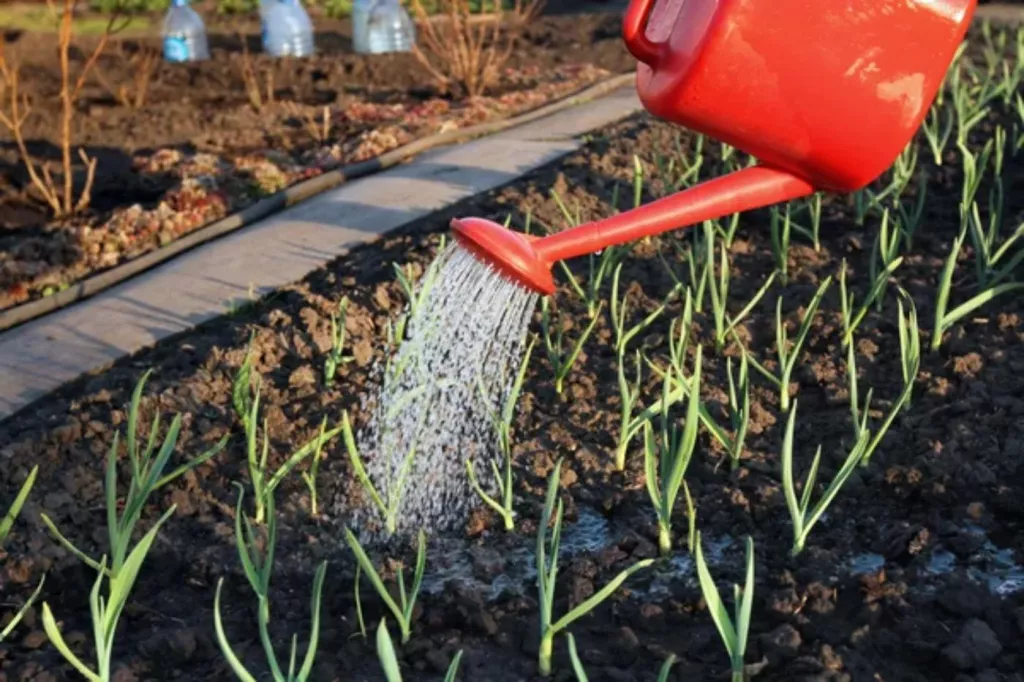
On this page:
Garlic Varieties and Their Growth Rates
When you're considering planting garlic, the type matters. The variety of garlic you choose affects not only the taste but also the time it takes to harvest.
| Garlic Type | Typical Time to Maturity |
|---|---|
| Softneck garlic | 6-9 months |
| Hardneck garlic | 9 months or more |
| Elephant garlic | 6 months |
Softneck garlic growth rate
Softneck garlic varieties typically mature faster, often ready within 6 to 9 months.
Known for their soft stem, or neck, they are ideal for braiding. Popular softneck types include Artichoke and Silverskin. The Artichoke variety can produce large, bountiful bulbs, while Silverskin is renowned for its long shelf life.
Hardneck garlic takes more time to mature
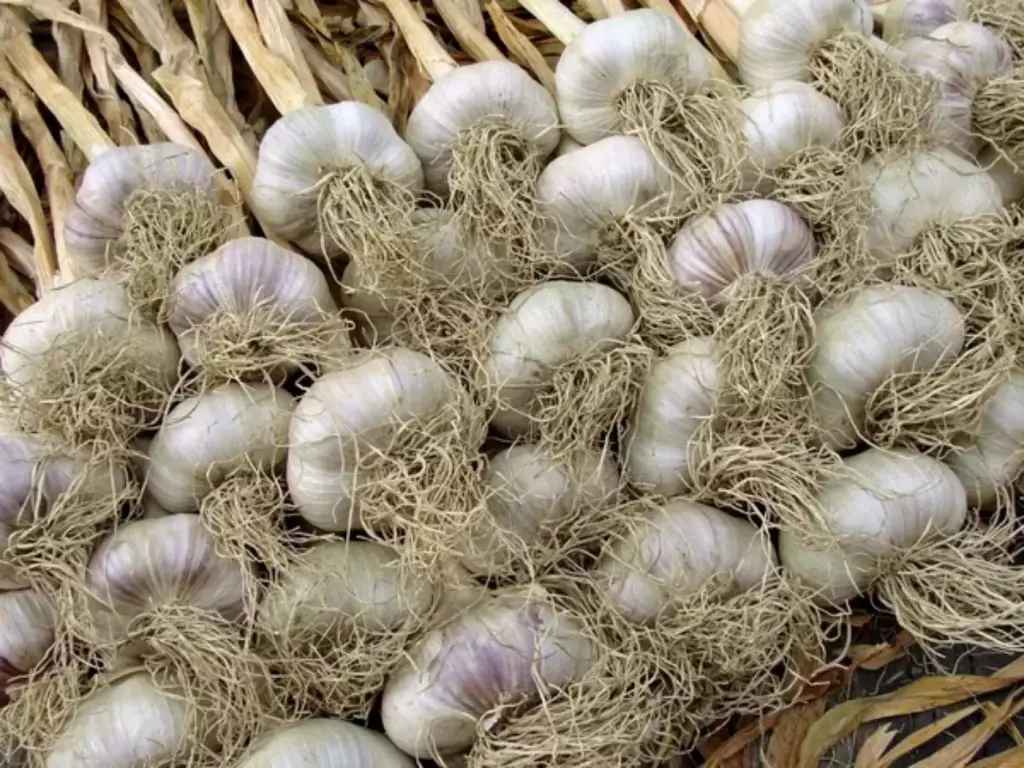
Hardneck garlic, on the other hand, can take 9 months or more to reach maturity. Characterized by a stiff stem and fewer, larger cloves, these varieties include the Rocambole, Porcelain, and Purple Stripe.
Rocambole garlic is praised for its rich flavor, Porcelain varieties boast large, robust cloves, and Purple Stripe has a striking appearance and complex taste.
Elephant garlic grows the fastest
If you're looking to harvest garlic on the quicker side, Elephant garlic is a good choice. Although not a true garlic—it's more closely related to leeks—it matures quickly and can be ready in as little as 6 months.
Remember that softneck varieties also tend to grow faster than their hardneck counterparts.
Life Cycle of Garlic
In the life cycle of garlic, you'll watch your crop transition from planting to a mature bulb ready for harvest.
Bulb formation stage
During the bulb formation stage, your garlic plant is focusing on developing the bulb. After a period of vegetative growth where leaves expand and roots strengthen, the plant begins forming a bulb.
This is initiated as the daylight hours increase and the temperature rises. Your garlic transitions from a shoot to a bulb, eventually segmenting into multiple cloves.
Developing from seed to sprout
Starting from a seed -- commonly a clove -- garlic begins its journey. Under the soil, the clove sends out roots and a shoot in a process called germination.
In several weeks you should see green shoots emerging from the soil, marking the sprout stage where photosynthesis can begin to nourish your growing plant.
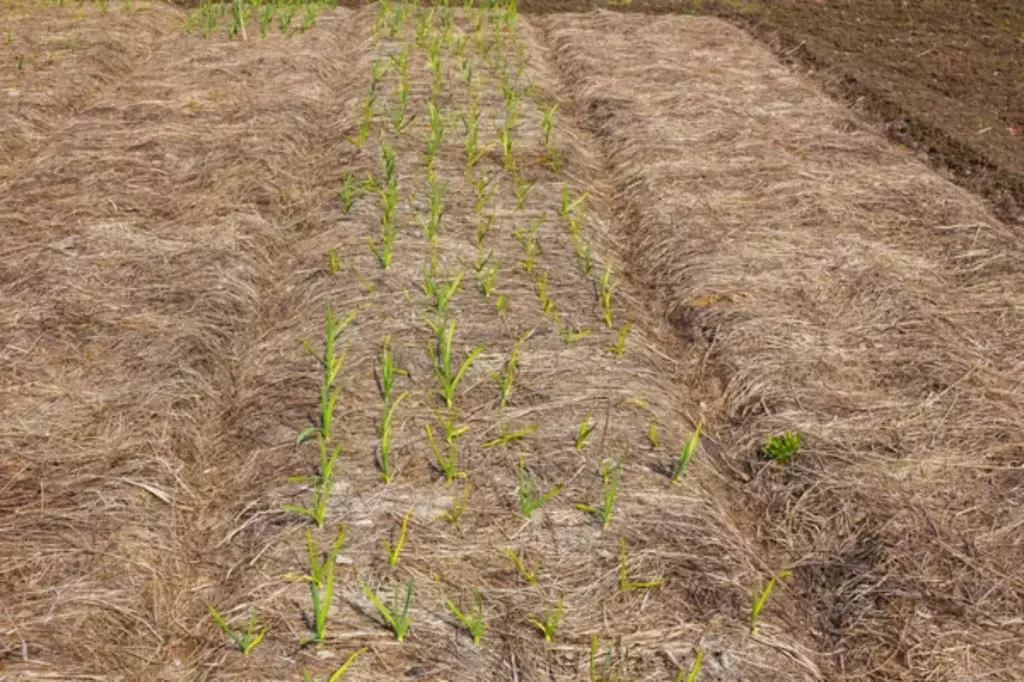
Maturation and harvest
Finally, the mature bulb phase is where the garlic has finished growing. After several months, the leaves will begin to brown, indicating that it's nearing harvest time.
You can then dig out the garlic bulbs, which are now segmented into multiple cloves, ready for drying and storage or immediate use.
How Long Does Garlic Take to Grow from Cloves?
When you plant garlic cloves, it usually takes about 8 to 9 months for them to grow into mature bulbs. Starting, make sure you plant the cloves in the fall, ideally 4 to 6 weeks before the expected first frost. This timing allows the cloves to establish roots before the ground freezes.
- 4 to 6 weeks before last frost: Plant your garlic cloves if it's spring.
- 1 inch deep: Plant each clove with the pointy end up.
- 4 to 6 inches apart: This is the spacing for each clove.
- 6 to 12 inches between rows: Keep this distance to ensure ample space for growth.
Your garlic will have enough time to develop roots and even sprout a few leaves before dormancy in winter. When the weather warms, your garlic will restart its growth.
For a speedier harvest, choose an area that gets plenty of sunlight and has well-draining soil. Don’t forget a light mulch to keep moisture in and the weeds away.
Remember, patience is key, as garlic is not a quick crop. But your efforts will be rewarded with homegrown garlic that's versatile in the kitchen and boasts a fresh, robust flavor.
Garlic Growth Rate Under Different Growing Conditions
Growing garlic in water
Growing garlic in water is notably faster than soil-based methods. You can expect to see garlic sprouts in as little as 7 to 10 days. In several weeks, you'll have full-fledged garlic greens ready to harvest.
To start, just suspend a garlic clove with the base down in a small container of water. Make sure only the bottom of the clove is submerged. Place your setup in a spot that receives ample sunlight and watch the roots and shoots emerge swiftly.
| Stage | Duration |
|---|---|
| Sprouting | 7-10 days |
| Edible greens | 3-4 weeks |
Remember, these are greens, not full garlic bulbs. While you can’t get whole bulbs this way, garlic greens are tasty and aromatic, perfect for adding a fresh kick to your dishes. Keep the water clean and replenished to prevent any unwanted growth of algae.
By choosing to grow garlic in water, you’ll enjoy the greens without the wait of traditional gardening. Enjoy your quick harvest of crisp, flavorful garlic shoots!
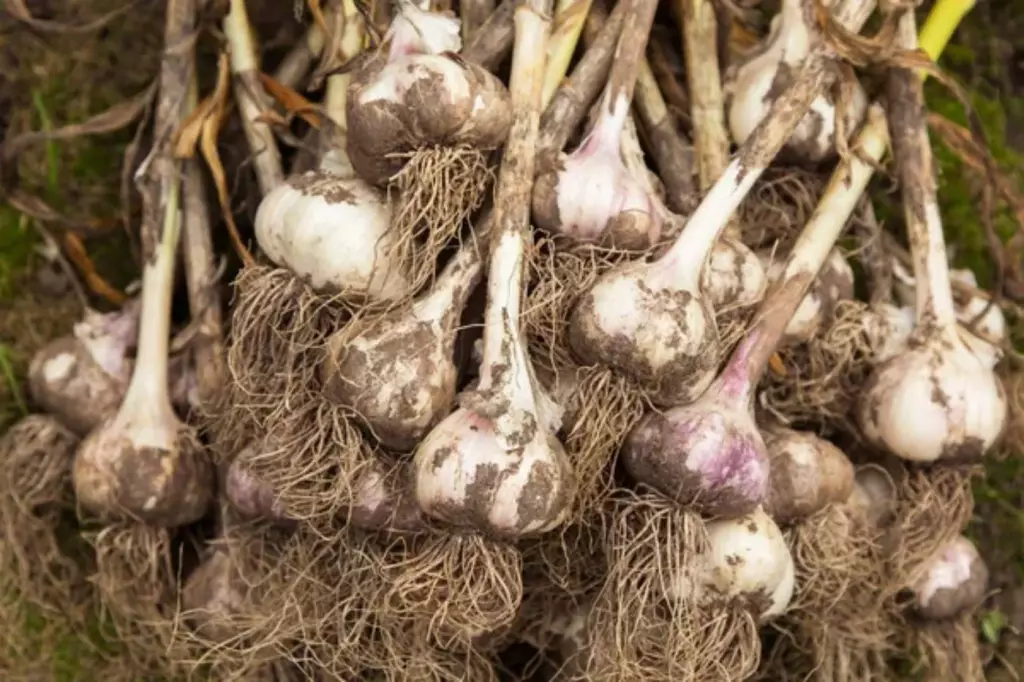
Growing garlic in a greenhouse
When you're growing garlic in a greenhouse, expect the process to take about 6-9 months if you plant cloves in the fall. This timeline is partially influenced by the garlic variety you choose. For instance, turban garlic often matures quicker than others.
If you opt for garlic seeds, also known as bulbils, they will take longer – typically an additional year. Seeds need to go through germination, develop leaves for photosynthesis, and then start forming bulbs.
To potentially speed up growth, make sure your greenhouse has loose, well-draining soil that's rich in organic matter. Test your soil to ensure it has the right pH level, ideally between 6.0 and 7.5. You can find more about the optimal soil conditions for garlic in this article.
Remember these quick tips:
- Plant cloves in fall for a 6-9 month growth period.
- Use seeds for a longer cultivation time (up to a year more).
- Maintain the soil pH around 6.0-7.5.
- Water when the top inch of soil feels dry to the touch.
Growing garlic indoors
Growing garlic indoors can be a rewarding venture, but you might wonder about the timeline. Generally, garlic takes about 8 to 10 months to develop from clove to mature bulb indoors. This is a bit longer than outdoor growth due to less ideal conditions.
The stages of indoor garlic growth:
- Planting: Place your cloves in a pot with ample space.
- Sprouting: Green shoots should appear in 1-2 weeks.
- Bulb Development: After sprouting, the garlic will spend the next several months forming a bulb.
To speed up the process, ensure your garlic gets plenty of light—aim for a spot with six to eight hours of bright light daily. A south- or west-facing window or a grow light can suffice when natural sunlight is inadequate.
Remember: Garlic prefers cool temperatures for bulb formation, so keep your indoor temperatures moderate. Water consistently, keeping the soil moist but not waterlogged.
Tips for encouraging growth:
- Use a deep pot with good drainage.
- Invest in quality soil and organic garlic cloves.
- Fertilize gently with a balanced fertilizer.
How to Speed Up Growth
Speeding up garlic growth involves a blend of attentive care and creating the right environmental conditions. Here's how you can do it:
Being consistent with watering
The soil should be kept evenly moist but not waterlogged to avoid root rot. Over-watering or under-watering can both adversely affect the plant's growth. Regular checking of soil moisture can help maintain the optimal balance.
Using a balanced fertilizer
Use a balanced fertilizer, preferably slow-release, to ensure a steady supply of nutrients. Slow-release fertilizers are beneficial as they provide a constant source of nutrition over an extended period, avoiding the risk of nutrient burn and the need for frequent re-application.
Controlling the temperature
Garlic thrives in cool to moderate temperatures, especially in its early developmental stages. The ideal temperature range is about 60-65°F (15-18°C).
If the temperature rises significantly above this range, the growth of the garlic may be stunted. In regions with higher temperatures, planting in a location that gets afternoon shade or using shade cloths can help maintain cooler conditions.
Complying with the light requirements
Ensure that your garlic plants receive at least 6 hours of full sunlight each day. Sunlight is crucial for photosynthesis, which drives growth and development.
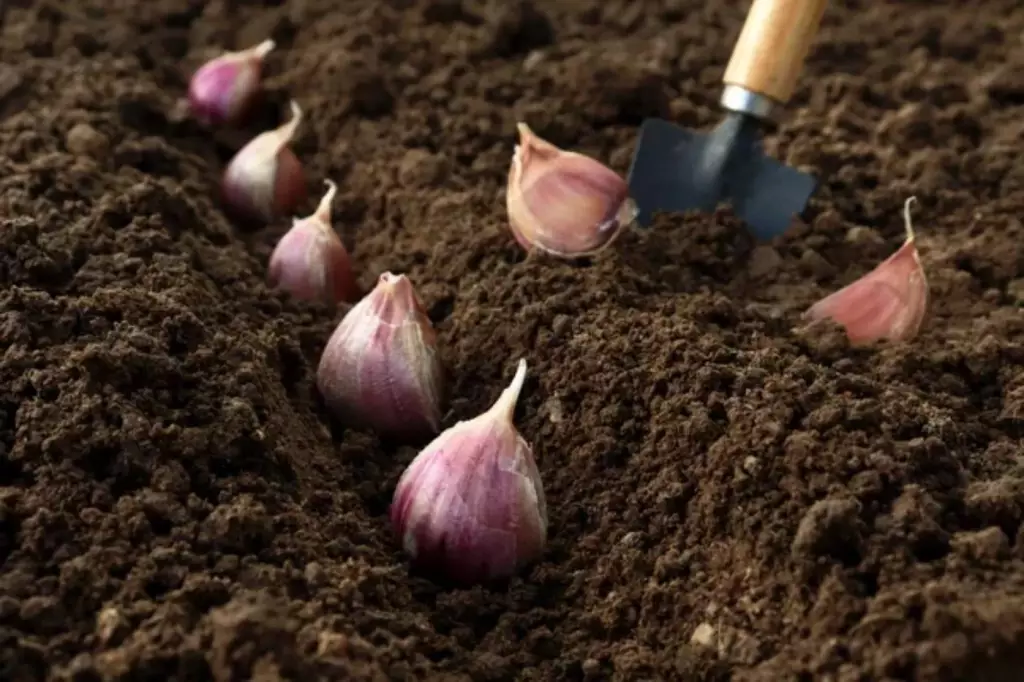
A sunny spot in your garden is ideal. If you're growing garlic indoors, place it near a south-facing window or use grow lights to provide sufficient light.
Enriching the soil with nitrogen
Nitrogen is a key component for leaf development, which in turn supports bulb growth. Incorporating nitrogen into the soil can be done using a nitrogen-rich fertilizer or through organic means like compost.
Compost not only adds nitrogen but also improves soil structure and health.
Using mulch
Applying mulch around your garlic plants helps regulate soil temperature, retain soil moisture, and suppress weed growth. Organic mulches like straw or dried leaves are preferred as they break down over time, adding organic matter to the soil.
Regular monitoring
Different garlic varieties may respond differently to these conditions. It's crucial to observe your plants and adjust care practices accordingly.
Some signs to look out for include the color and vigor of the leaves, the moisture level of the soil, and the overall health of the plants.
Finally, regular monitoring and care are essential. This includes tasks like weeding, checking for pests and diseases, and adjusting water and fertilizer as needed.



